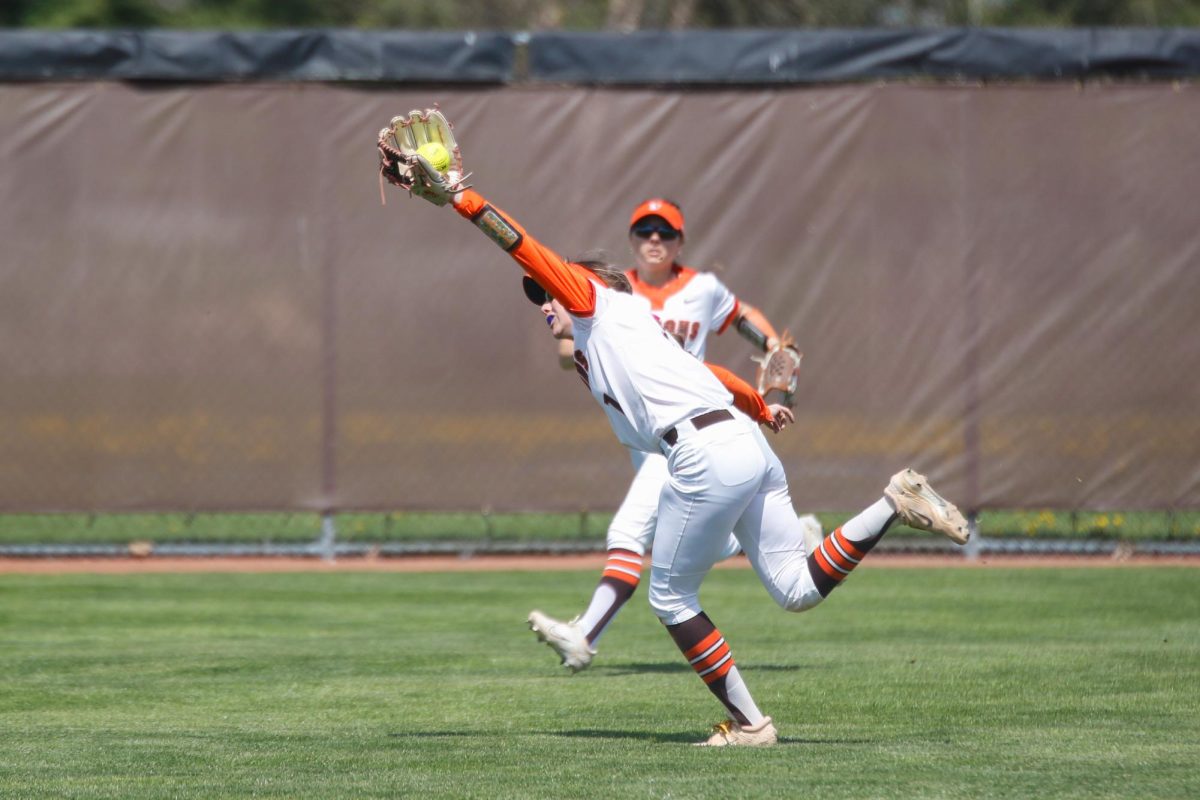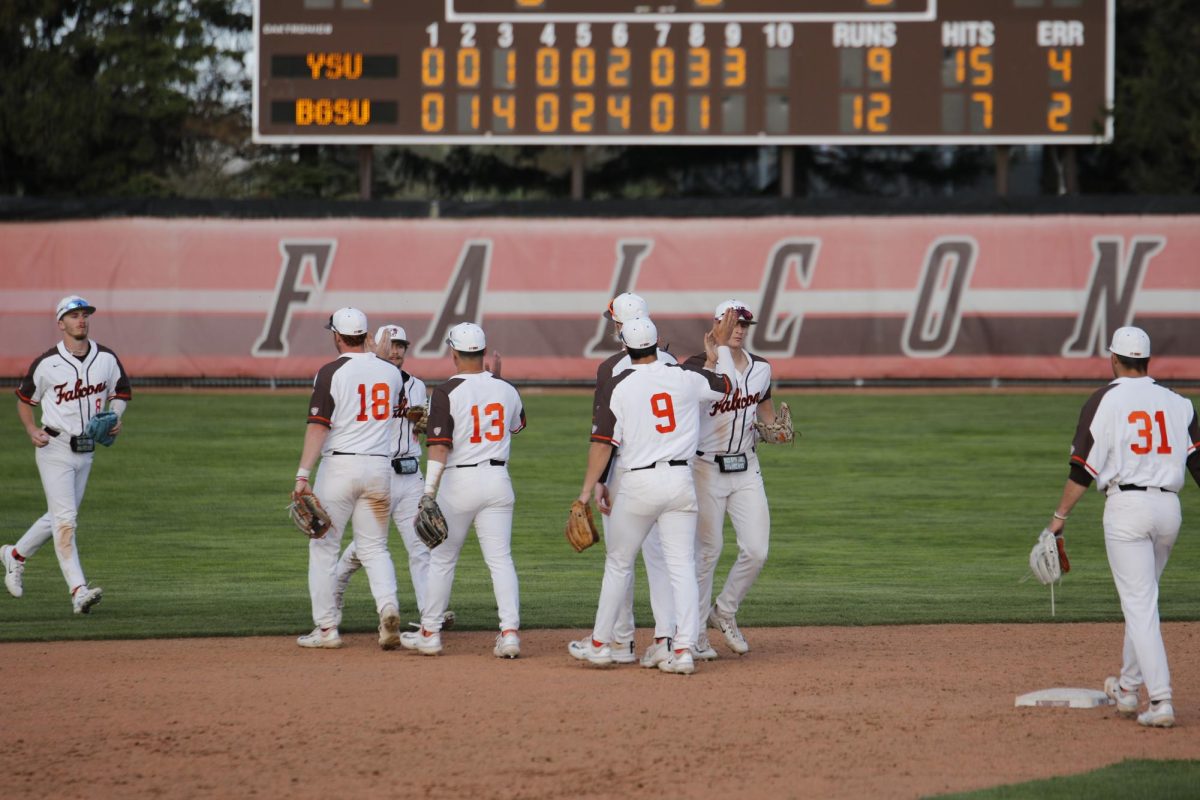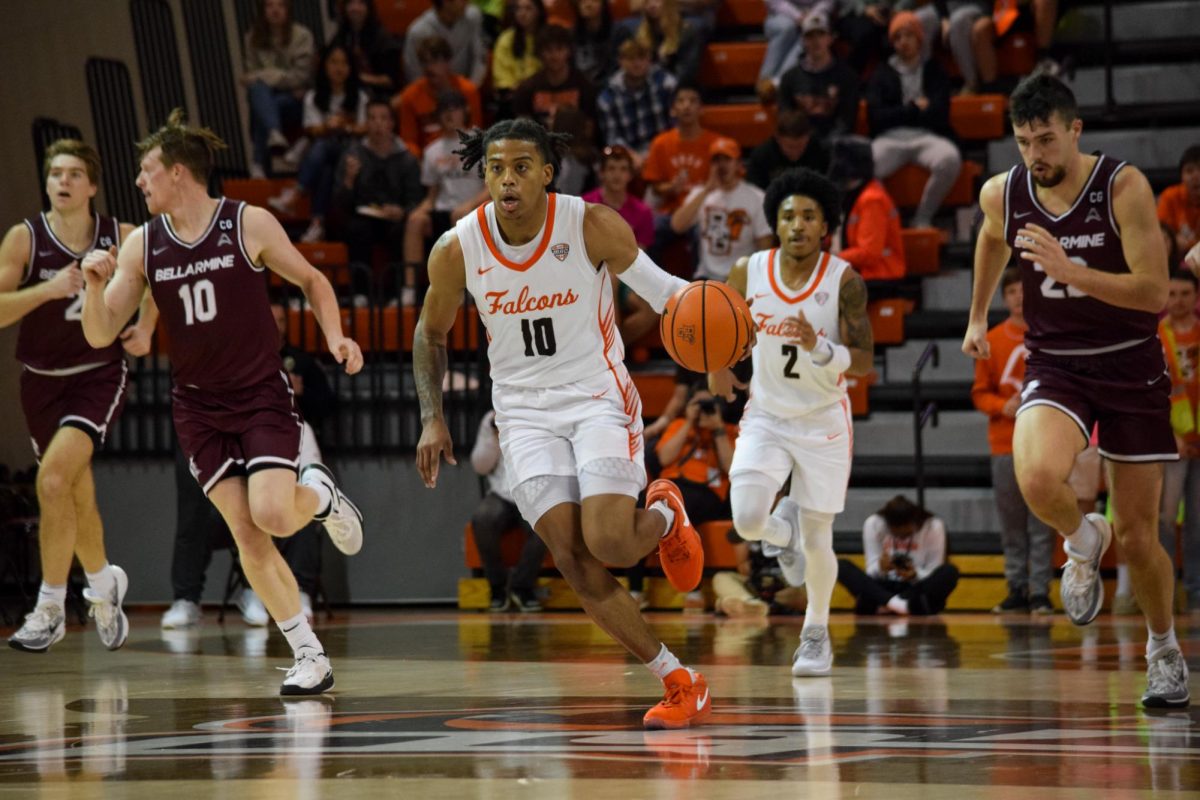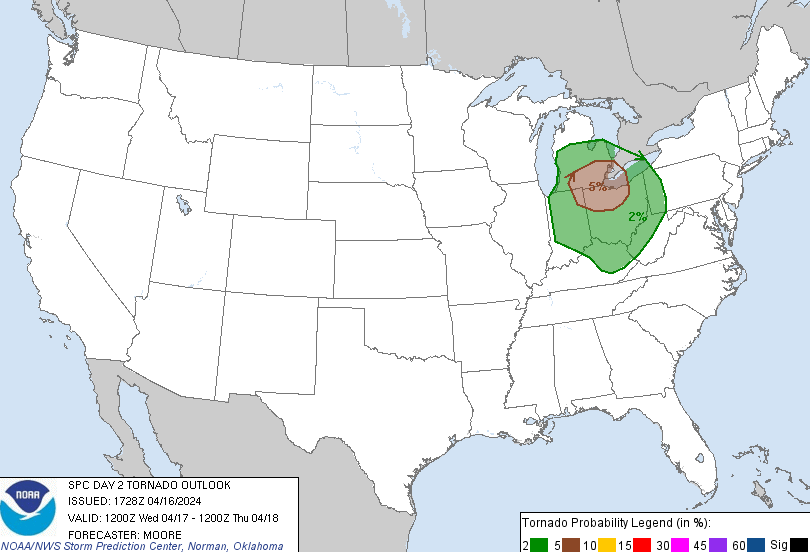The late Oscar Wilde once said, “Life imitates art far more than art imitates life.” Now, how many people truly believe that is unknown to me, but after seeing Joan Livingstone’s newest exhibition, “Migraines, Margins, Disruptions,” I understand how life and art correspond together.
Livingstone’s exhibition will be opened to the public in the Dorothy Uber Bryan Gallery in the Fine Arts Center on campus. Many of the creations in the exhibition are pieces that she has worked on for the last decade.
“10 years ago, I was really interested in notions of things that disrupted and emerged from the surface,” Livingstone said. “Where things are pushing forth from the inside to the outside, that notion of disruption.”
This is partly why the exhibition is named what it is. She also said that her “work has been about a kind of engagement with the quality of skin or membrane that defines a form” and that is another reason for the name of the exhibition.
While looking at her work in the gallery, she discussed a few pieces that are connected with significant events that have happened in her life. One example is “At Capacity,” which is the name of the colorful array of funnels set up on one wall in the gallery. During the time of this creation, she said she thought about her father, who was a physician, because he always talked about truth in the scientific sense and “the notion of what is the truth.”
“I was measuring, meticulously, formulas of color and timing, so this became all about paying attention and trying to repeat,” she said. “A standard, which is a way some people consider the truth.”
She explained that she could never obtain the same exact results with the outcomes of the funnels and that “you know the truth by scientific repetition, that you’re able to repeat it, so it must be true.”
“It (‘At capacity’) is almost sort of my way of playing with that notion of what is the truth,” she said. Her father died when “At capacity” was being made and she said, “it’s always been a meaningful thing that those two coincided.”
Another one of her pieces hangs on the opposite side of the room and is called, “Migrations.” To the average bystander, it looks almost like white sections of a blanket with objects underneath it, but its meaning is much deeper than that.
She explained “Migrations” as “the notion of whiteness [the ‘blanket’] and fragments [the ‘objects’] that are trying to redefine their home and find their baring again. The whiteness is about a kind of absence.”
“Migrations” is mainly about when her brother died about four years after her father and the absence of that happening, she said.
In her exhibition, some truth can be found in the creations that are hanging on the walls, and an example of this can also be seen in the lengthy piece called, “Relocations.”
“Relocations” is a collection of different items that she found on the streets of her neighborhood in Chicago. Over the past several years, while walking her dog, she said that she would randomly pick construction materials, empty chip bags, a portion of a flag that said “marines” on it, and anything else that appealed to her liking.
“I was thinking about the surfaces of that neighborhood,” she said. “The kind of cultural skins that get thrown out or left out or tossed out. What gets blown around on the streets.”
She then stitched the pieces together, by hand, “to make this long, kind of line.” The name fits the piece as perfectly as she makes it fit on the gallery wall. Everywhere “Relocations” is shown, she sews it to fit the gallery’s setting.
“It’s been relocated, all these fragments, many times, from the street to my studio, stitched together over a long period of time. Then relocated to another place, bringing the memory of my neighborhood to your school.”
One of the main people responsible for having Livingstone on campus is Jacqueline Nathan, BGSU’s gallery director, and she said that when she found out about Livingstone’s new show, she thought how interesting it looked.
“Joan Livingstone has an amazing reputation and it’s very exciting to show her work,” Nathan said. “With a lot of depth, it’s the kind of work that you can look at for a long time and can keep seeing more interesting things about it.”
Nathan said that this is an excellent opportunity for not only students, but also for the general public to see Livingstone’s work.
“It’s her particular way of looking at the world and interpreting that so that people can come and experience the things she creates,” Nathan said. “It’s her own personal vision and she has a story to tell that’s different.”
The exhibition begins at 7:30 tonight. All exhibitions are free of charge and open to the
public.
















